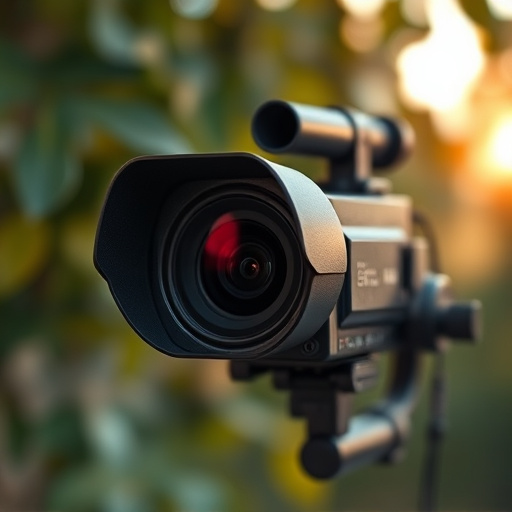Undetectable wireless security cameras offer discreet surveillance solutions, blending into surroundings as everyday objects like light fixtures or plants. Ideal installation locations include areas with clear line-of-sight access, open spaces, and minimal foot traffic. Professionals use infrared equipment and signal detection tools to identify these hidden cameras. Legal and ethical considerations regarding privacy laws and consent are crucial, with severe penalties for misuse. Regular maintenance checks, motion sensors, encryption, and access controls are essential for preventing system failures and data breaches.
“Undetectable wireless security cameras have emerged as a discreet yet powerful tool for surveillance, raising both technological and ethical questions. This comprehensive guide delves into the art of identifying these covert recording devices, offering insights on their operation, potential installation spots, and advanced detection techniques. From understanding the technology’s capabilities to navigating legal boundaries, we explore methods to ensure security while addressing crucial ethical considerations surrounding their use. Get ready to uncover the secrets behind undetectable wireless security cameras.”
- Understanding Undetectable Wireless Security Cameras: A Brief Overview
- Identifying Potential Locations for Covert Installation
- Advanced Techniques for Spotting Hidden Cameras
- Legal and Ethical Considerations in Using Covert Recording Devices
- Maintenance and Detection Methods to Ensure Security
Understanding Undetectable Wireless Security Cameras: A Brief Overview
Undetectable wireless security cameras have revolutionized surveillance technology by offering discreet and seemingly invisible monitoring solutions. These advanced devices operate wirelessly, eliminating the need for complex cable installations, making them an attractive option for both residential and commercial applications. Their design focuses on minimizing detection, employing innovative techniques to blend seamlessly into their surroundings.
The key to their undetectability lies in sophisticated engineering. These cameras often incorporate tiny dimensions, subtle aesthetics, and advanced signal transmission methods. They can be installed in common household objects like light fixtures, plants, or even painted surfaces, making them nearly impossible to discern without close inspection. This stealthy approach ensures that potential targets remain unaware of the surveillance presence, providing a level of privacy protection and security enhancement not achievable with traditional cameras.
Identifying Potential Locations for Covert Installation
When it comes to identifying potential locations for undetectable wireless security camera installations, a systematic approach is key. Start by assessing areas that offer line-of-sight access to the target zone without obstructed views or excessive shadows. This could include open spaces, corridors, or rooms with minimal furniture placement. Look for spots where a hidden camera can be placed discreetly yet strategically, such as inside common household objects like picture frames, plants, or even smoke detectors.
Consider areas that are relatively undisturbed and have limited foot traffic to minimize the risk of discovery. Additionally, pay close attention to locations with power outlets nearby for easy installation of wireless cameras without drawing unnecessary attention. By combining these factors, you can identify potential sites that provide optimal conditions for deploying undetectable wireless security cameras, enhancing surveillance capabilities while maintaining secrecy.
Advanced Techniques for Spotting Hidden Cameras
In the quest to identify covert recording devices, especially undetectable wireless security cameras, professionals employ advanced techniques that go beyond basic visual inspection. One such method involves utilizing specialized infrared (IR) equipment, which can detect heat signatures emitted by electronic components, revealing hidden cameras that might be invisible to the naked eye. These IR thermal imaging cameras are capable of identifying temperature variations, indicating the presence of active devices drawing power.
Additionally, advanced signal detection tools are employed to intercept wireless signals from hidden cameras. These tools analyze radio frequency (RF) bands, looking for patterns and signatures associated with specific camera models. By sweeping through various frequencies, experts can pinpoint the exact location of an undetectable wireless security camera, even in complex environments where visual confirmation is difficult.
Legal and Ethical Considerations in Using Covert Recording Devices
Using covert recording devices, such as undetectable wireless security cameras, raises significant legal and ethical concerns. In many jurisdictions, audio or video surveillance without explicit consent is a violation of privacy laws. Individuals have a reasonable expectation of privacy in certain settings, and secretly recording conversations or activities can infringe upon these rights. Ethical considerations also come into play, especially when recordings are used for purposes other than their intended security function.
It’s crucial to understand the specific regulations in your area before deploying any covert recording technology. Misuse of such devices can lead to severe legal repercussions, including fines and damage to one’s reputation. Ethical guidelines suggest transparency and obtaining consent whenever possible. Proper use involves limiting surveillance to authorized areas and ensuring that recorded data is handled securely and with privacy in mind.
Maintenance and Detection Methods to Ensure Security
Maintaining covert recording devices, such as undetectable wireless security cameras, requires a blend of proactive and reactive strategies to ensure optimal performance and security. Regular maintenance checks are crucial to prevent system failures or leaks in sensitive information. This includes testing battery life, ensuring clear camera views, and verifying data transmission strength. By keeping these components well-maintained, the risk of exposure is significantly reduced.
Detection methods play a critical role in maintaining the integrity of covert recording systems. Advanced technology, like motion sensors with infrared capabilities, can alert users to any unauthorized access or tampering attempts. Additionally, secure encryption protocols and access controls safeguard recorded data from unwanted intrusions. Regular updates to these security measures keep pace with evolving threats, ensuring that the system remains effective in detecting and deterring potential breaches.
Undetectable wireless security cameras, while posing challenges due to their design, can be identified through meticulous inspection and advanced detection techniques. By understanding where they are most likely to be installed and employing specialized tools, one can navigate the legal landscape responsibly while safeguarding against potential privacy breaches. Regular maintenance and staying informed about evolving technology are key to ensuring a secure environment.
